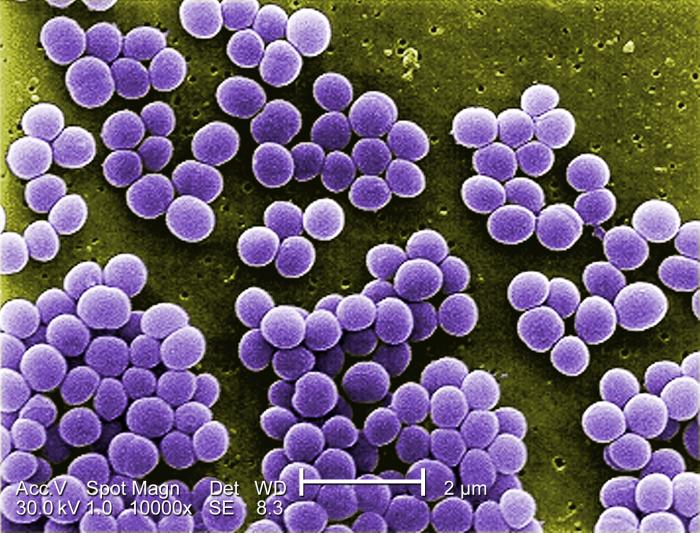This past week, I read an article about capsules on wine. Granted, the title caught my eye, and I clicked on the bait. After reading the article I was infuriated on different levels.

Study reveals capsules and foils prevent bacterial contamination
Ever since I was young, I loved science. My very first science class taught me what makes a good scientific experiment. The five components of an experiment are observation, questions, hypothesis formulation, methodology and results. As the researcher, you must remain unbiased and most importantly the hypothesis must be testable.
To me unbiased would mean that it is not funded by a company that produces a product that is becoming less and less popular. Although I couldn’t find a recent article declaring a percentage of wines going capsule-less (naked), I did find a 2012 article in Wine Business that stated there was a 19% decrease of use since 2004. I can only imagine the percentage decreased from 2012.
Granted, this article was very vague in the research approach. (probably on purpose) There was no mention of how many bottles were tested, what the conditions were and even the actual measurable results. But they were very quick to state that capsules significantly aid in the protection of “E-coli and Staphylococcus aureus, which causes acute infections transmitted by sneezing, and the development of mould.”
Let’s start with that statement before we even get to the pitfalls of the study itself. First, E. coli (Escherichia coli.) is a group of bacteria that typically lives in your gut. It has been known to cause serious illness as well as death. According to the North Carolina Department of Health, there are approximately 265,000 illnesses per year and 100 deaths.

The species that lives in your gut are helpful and do not harm you, but there are other species that attach to your cells and release toxins. The main symptoms are diarrhea, low grade fever, loss of appetite and stomach pain. This occurs through accidental consumption of one of two strains of E. coli. STEC, Shigella bacteria, is found on food and releases a toxin (Shiga toxin) that damages your cells. Symptoms occur between three and five days after consumption. The more popular, or well known, strain is known to give “Traveler’s diarrhea,” is Enterotoxigenic E. coli (ETEC) and occurs within a few hours of consumption. (you know this one; don’t drink the water in these locations)
E. coli is transmittable, but NOT through sneezing! Strike one for the research paper. It is transmitted through contact of the contaminated person’s feces or in contact with their hands if they did not properly wash after going to the bathroom. Secondly, E. coli does NOT lead to the growth of mold. Mold is a fungus and bacteria can NOT morph into a different species. Strike two!
Onto Staphylococcus aureus. This is another type of bacteria. Staphylococcus aureus is present in the nose (usually temporarily) of about 30% of healthy adults and on the skin of about 20%. (according to Merck Manual) This round bacteria is most often transferred by direct contact through contaminated objects such as door knobs, elevator buttons, etc. Although it rarely can be transmitted by sneezing, it can NOT lead to the development of mold.
However, Staphylococcus aureus can lead to extremely dangerous illnesses. It can cause skin infections, pneumonia, heart valve infections, and bone infections and often can be resistant to some antibiotic treatments. People who are hospitalized or work in a hospital are more likely to be carriers. As with E. coli there are different strains. Some strains produce toxins that can cause staphylococcal food poisoning, toxic shock syndrome, or scalded skin syndrome, in which the infection causes peeling skin over large parts of the body.

Methodology?
“The bottles were immersed with and without capsules in an environment contaminated with the bacteria and fungi. Samples were then taken from the necks of the bottles and the capsules to observe bacterial and mould growth.”
Here’s my challenges:
1- How many bottles? The number of bottles tested would determine if the difference was statistically significant.
2- How were the bottles treated prior to the immersion? Were they sterilized prior to being submerged?
3- Where were they stored prior to and after the submerging of bottle necks? Was the temperature the same for both the control and test groups? How was the lighting? Was the humidity the same?
4- What was the exact challenge contaminate count? At what level were the contaminants?
Results?
Results showed that no bacterial or mould contamination was present on the neck of a bottle with a capsule or foil, while there was “intense growth” recorded on the bottles without a capsule or foil with “widespread and abundant colonies present on the entire sampled surface.”
Here’s my challenges:
1- Their statement of “no contamination was present on the neck” leads to the deductive reasoning that they removed the foil and tested the neck. I’ll give them that. However, why would there be? They never mention if there was contamination on the capsule or foil. This is where the growth would be since it is covering the neck of the bottle, you would not expect growth to be on the bottle itself.
2- Widespread and abundant? Wow! Through all my years of science, I have never heard those terms as scientifically acceptable. What is widespread? How does it differ from abundant? Is ten microorganisms abundant? How about 100, maybe 1000?
Conclusions?
Crealis claimed that the findings represented a “hygienic assurance” for consumers and producers. It also said that they act as a “physical barrier” that limited microbial contamination, which was similar to those that can occur during bottling, storage, distribution or by the consumer when the bottle is for sale. This contamination can occur through airborne transmission – sneezing and coughing – or through direct contact, such as touching the neck.
Here’s my challenge:
1- It is only logical to believe that there was growth on the capsules. Let’s say that the capsule does “represent a hygienic assurance,” BUT since both E. coli and Staph. aureus are transmittable through contact (they state this, so they agree with this) if there is contamination on the capsule, when the individual touches the capsule to remove it, they are therefore transferring the contaminant to their hands. So what’s the difference?
Finally, the generalization statement, “It is not surprising that denominations such as Champagne and Prosecco have made it mandatory following the EU directive that made protective optional for sparkling wines.” baffled me. So I did a little research. I did not find any information about this requirement. As an example, there is a multi-page document on Prosecco’s regulations for production and bottling and although it mentions types of corks, types of bottles, dates of release, etc. there is no mention of a capsule. Additionally, on Wikipedia’s page for European wine regulations, it states “The EU wine regulations, as a part of CAP, do not include regulations on age limits for buying or drinking alcohol, regulations on wine advertising or retailing and other aspects of national social or public health policies of the individual EU member states.” Plus, recently, Chapoutier in the Rhone Valley announced that they would be eliminating capsules and they are a member of the EU.
These types of “studies” truly infuriate me. Wine can be confusing enough for many people, when articles like this are released, it adds to to the confusion and can truly harm the industry. Will people stop purchasing wine that doesn’t have a capsule, because they read this? What are your thoughts on this article and other articles like this?
~Slàinte!
I invite you to follow me on Instagram, X, Facebook and Youtube for all things wine. I’ll never tell you what to drink, but I’ll always share what’s in my glass.
Please support our Sponsor: Use code “EXPLORE” for 10% off your order
Dracaena Wines has received consistent 90+ ratings and multiple Double Gold medals. Click image to order yours today and let Dracaena Wines Turn Your Moments into Great Memories!


